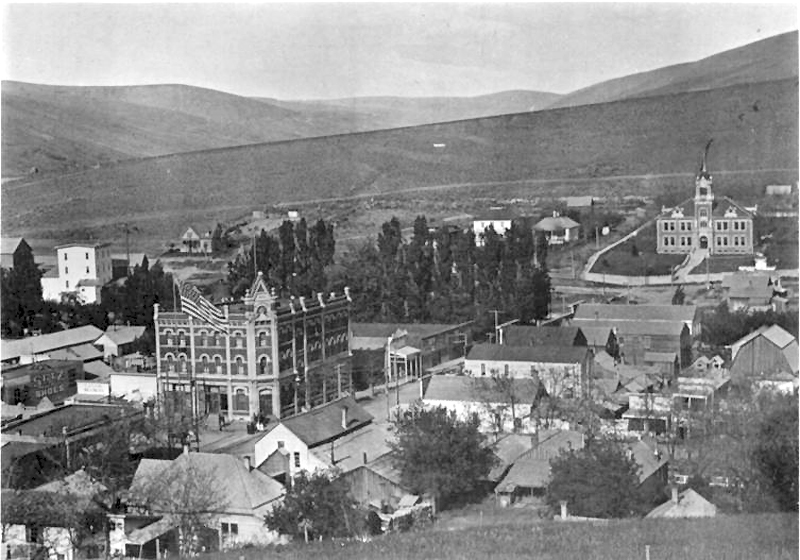In the rolling wheat fields of north-central Oregon's Morrow County lies the city of Heppner. Willow Creek meanders through the center of town, a stream that normally runs only ankle deep by mid-June.
After leaving its head-waters in the Blue Mountains, Willow Creek enters a narrow valley through the undulating, treeless prairies of the Deschutes-Umatilla Plateau, a semi-arid region receiving less than twenty inches of annual precipitation. The rains that do occur often come in the form of intense thunderstorms that can dump several inches in less than an hour.
The spring of 1903 was among the warmest and driest in memory for eastern Oregon. Sunday, June 14, was another hot day as Heppner's residents prepared for family suppers or evening church services. By mid-afternoon, dark clouds were building in the hills southwest of town. At 4:30 pm, rain, and then hail, began to fall. The storm produced such a noise people could not hear the roar of the wall of water and debris that descended on the town.
The Heppner Gazette reported: "Without a second's warning, a leaping, foaming wall of water, 40 feet in height, struck Heppner at about 5 o'clock Sunday afternoon, sweeping everything before it and leaving only death and destruction in its wake." The silt-laden floodwaters carried away everything in their path. The thick mass acted more like a battering ram than a flood of liquid. Homes floated off foundations and crashed into other structures, breaking apart and adding their debris to the flowing mass.
By the time the flood waters receded, most of Heppner's residential area was destroyed and two-thirds of its homes were gone. The town's business district was wrecked with all but three of the town's businesses demolished. Newspaper reports gave disparate figures for the loss of life from the disaster. Early reports placed the death count as high as 500 persons. Eventually, 247 bodies were recovered, though many reports still list the casualty count at 251.
Many surviving residents left Heppner following the disaster. The 1910 census showed a population of 880, down from the 1,400 living there in 1903. It was not until the 1990 that Heppner's population rebounded to pre-flood levels. While Heppner has experienced other floods since 1903, these events were relatively minor. A dam on Willow Creek immediately above town has protected the city since 1983.
Today Heppner remains a pleasant community better known for its Irish roots and St. Patrick's Day celebration than the flood that nearly destroyed it. In 2003, a three-panel stone monument was placed in town to mark the hundredth anniversary of the catastrophe. The monument, which includes a panoramic image of the destruction wrought by the flood and lists the names of the flood's victims, serves as a reminder of Heppner's day of tragedy.
-
![]()
Heppner Flood damage on June 14th, 1903.
Oregon Historical Society Research Library ba010628
Related Entries
Map This on the Oregon History WayFinder
The Oregon History Wayfinder is an interactive map that identifies significant places, people, and events in Oregon history.
Further Reading
DenOuden, Bob, 'Without a Second's Warning' The Heppner Flood of 1903. Oregon Historical Quarterly 105:1 (Spring, 2004).


